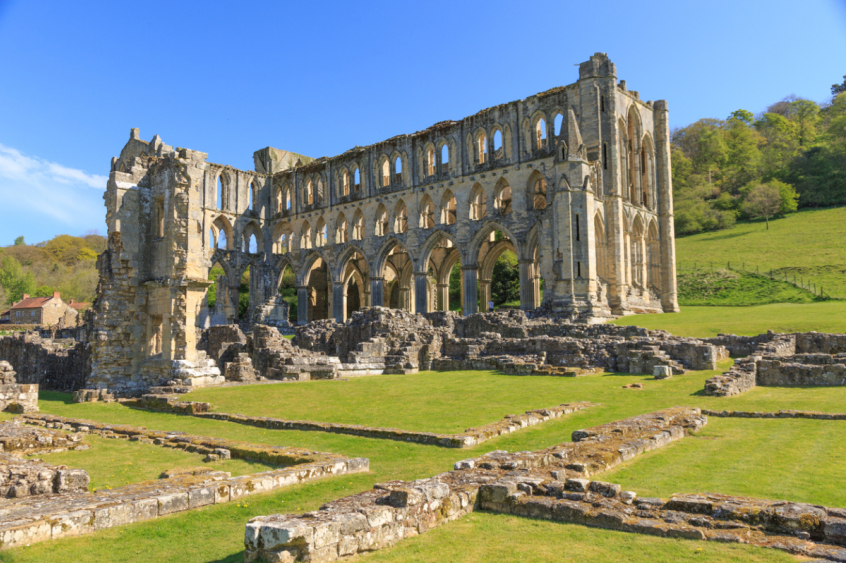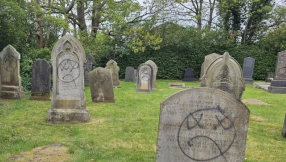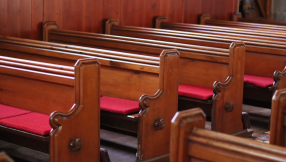
The revival at Rievaulx Abbey is difficult to understand for us modern people, as we rarely value self-denial, and even less often monasticism - even within the Christian community.
But in the twelfth century in England, monasteries were bursting at the seams, and enormous structures were needed to house them. The inspiring spiritual writings of their inhabitants overflow with enthusiasm for God and their experience of abiding in His love and sharing it with one another.
At Rievaulx Abbey, hidden away in a leafy quiet valley of deepest north Yorkshire, enough of the ruins remain to illustrate how large this community once was, full of monks committed to getting closer to God, and willing to renounce sex, money and comfort to do so.
The buildings are an impressive sight when up close, even in their dilapidated state. But when the community was first founded, in 1132, there were just a few wooden huts to house the believers. Building in stone started in 1140, and within a lifetime the structures were the towering spectacles that we can just about still see.
Nowadays it's sometimes believed that those who entered monasteries throughout history were doing so for worldly reasons: avoiding marriage, or poverty, for example. Religious houses could be active in many other ways than prayer and worship, acting as hotels, hospitals, sites of learning, and providers of social welfare in some cases.
While it's possible that other monasteries may have had the allure of worldly income, land rights and relative comfort, the people who joined the new Cistercian monasteries like Rievaulx were making a deliberate choice of complete dedication to God, and the fruits would soon be seen.
The Cistercians rejected luxuries such as stained glass, fine cloth or gold for the altar. More impressively in a world without central heating in the chilly hills of the North York Moors, they also rejected fur-lined boots, warm bedclothes and cloaks. The purpose of this self-denial was to encourage devotion to God and meditation rather than intellectual pursuit.
Such severity might chime with any negative stereotypes of medieval Christianity or religious communities that we happen to hold. But for this particular Abbey at least, inside there was deep spirituality and warm love.
"They offered the monk the chance of a close and mystical union with God," write Lionel Butler and Chris Given-Wilson in Medieval Monasteries of Great Britain.
Any history of the medieval church is limited by sources, but in the case of Rievaulx, its ethos and life is preserved in the many writings of its third abbot, St Aelred of Rievaulx. It was under his 20-year stewardship that the community grew to as many as 600 monks and lay brothers by the time of his death in 1167.
"It was Aelred's patience and compassion towards the weak, the poor and the spiritually afflicted that drew so many novices [new monks] to Rievaulx," write Butler and Given-Wilson.
"His concern was to lead them to a life of fruitful work, prayer and discipline, bringing them peace of mind and spirit in an atmosphere of charity and friendship."
Contemporary biographer Walter Daniel wrote that "his whole concern [was] to love and be loved".
It's perhaps an indication of the spirituality of the community that two of Aelred's best known books are on the subject of love: the Mirror of Charity, and Spiritual Friendship, both in print with Cistercian Publications.
In the latter work, Aelred gave a moving account of walking around the cloister of his monastery: "The brethren were sitting around forming as it were a most loving crown. In the midst, as it were, of the delights of paradise with the leaves, flowers, and fruits of each single tree, I marvelled. In that multitude of brethren I found no one whom I did not love, and no one by whom, I felt sure, I was not loved. I was filled with such joy that it surpassed all the delights of this world." The book vividly describes the importance of Christ as a foundation for friendship.
Starting in Burgundy in 1098, the Cistercians, or 'white monks' on account of their habits, wanted to return to the simplicity and austerity of the earliest followers of the sixth century monk St Benedict, whose sensible "rule" or guide for monastic life was highly influential.
The movement spread rapidly. In the UK, it really took hold in when Walter Espec brought monks from the mother house in France to Rievaulx in 1132 to begin the new community, "which awoke the English enthusiastically to the Cistercian blend of puritanism and compassion," according to Butler and Given-Wilson.
Although Aelred's winsome personality and wise teaching may have contributed to the rapid growth of his community, other local abbeys were similarly well populated in the 12th Century. Rievaulx was part of a Cistercian Yorkshire powerhouse that included Fountains Abbey and Byland Abbey, whose ruins also attract visitors today.
In our current age there are few Christian monasteries or convents that come anywhere near that size, in the UK at least. Yet there are small signs of new life for the monastic ideal: in Yorkshire there are small dedicated communities of enthusiastic young monks and nuns of the Franciscan Friars [or sisters] of the Renewal; in Devon are the Sisters of Mary Morning Star. Other small congregations and communities of committed Christians are gathering, keen to devote themselves to the Lord.
Seeking God at Rievaulx today
Entering Rievaulx Abbey requires £15 for each adult, thanks to English Heritage who manage the site. Perhaps as a result, only a handful of people were present to make use of the three or so staff on hand when I visited.
These sparsely populated ruins perhaps symbolise the spiritual fortunes of our country. Although there is a tiny and beautiful Anglican church next to the ruins - once just the 'slipper chapel' or entrance to the Abbey - it hosts only "occasional services" according to its noticeboard.
Yet over the road, there is a more positive vision, and the local Anglican vicar Rev Melanie Burnside is full of enthusiasm. The Rievaulx Methodist Church has a bright sign outside: "Jesus gives new life and hope!" Advertised on its noticeboard is an 'open air service' where Mike Fitton from the Christian Motorcyclists Association will be preaching.
"I had the blessing of attending and can attest to it being a wonderful, grace-filled event," Rev Burnside told Christian Today. "Mike Fitton spoke movingly about his own path to faith, his ministry and gave an invitation to others to step into the light and love of God.
"When I spoke to Mike afterwards we talked about the significance of being in view of the Abbey as we prayed, of the sense of all those who have gone before, faithful in prayer and worship and about there being something special about the Abbey's brokenness in its enduring beauty."
Inhabited, modern monastic structures are not too far away from Byland and Rievaulx, where pilgrims can board and join in with the worship - the "world's first eco-friendly nunnery" at Stanbrook Abbey, and Ampleforth Abbey, which is adjacent to the eponymous school known as the 'Catholic Eton'. They are relatively modern Catholic communities and buildings, built after post-Reformation legal restrictions were lifted.
There is an attractive walk from the local town of Helmsley towards the abbey, with many other beautiful scenes and places to visit.
The local Christian community has developed a series of walks that pass through local sites of faith called the Saint Aelred Pilgrim Trail that is leading a walk and launch event on 14 September.
Perhaps one day, people will again flock to give their whole lives to the Lord and grow in love for Him and for one another, as these early monks of Rievaulx once did.
Heather Tomlinson is a freelance Christian writer. Find more of her work at https://heathertomlinson.substack.com/ or via X (twitter) @heathertomli













